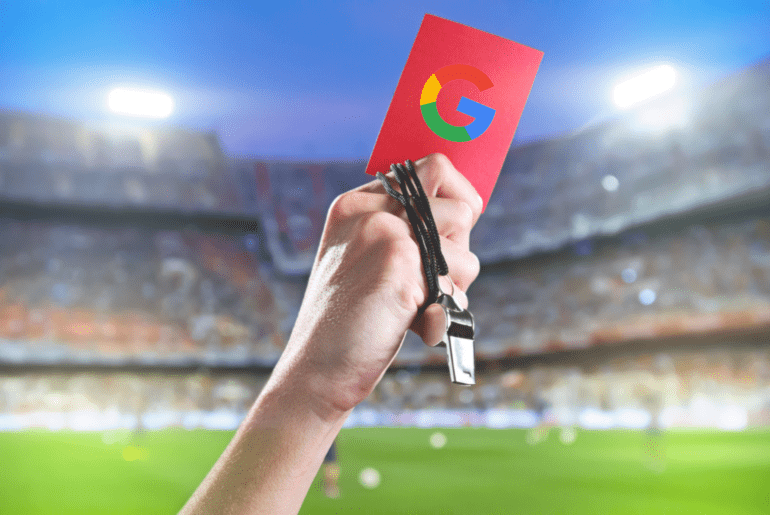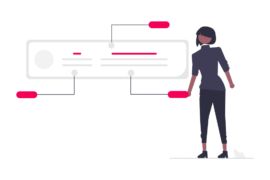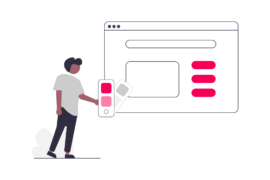Every webmaster’s dream is to have a website with a good search engine authority. Getting on the first page of search engine results requires creativity and patience (maybe a bit of luck too). Site ranking depends on a lot of factors, but mainly revolve around content and link building.
Due to the increasing competition, webmasters are seen using shortcuts and hacks in order to get a better ranking for pages and website. However, some of these practices can lead to penalties.
Google penalties directly affect the reputation and search rankings of a website, and can easily lead publishers to lose search traffic, leading to decline in ad revenues. So, let’s get started by understanding some of the most common Google penalties and tips to avoid them:
What is a Google Penalty?
Google Penalty is a punitive action against a website that doesn’t follow Google’s content policies and/or try to game the ranking algorithms, such as implementing ‘black hat’ practices to rank site on search engines.
Google, in its guidelines, asks webmasters/publishers to work on the quality of their site in order to secure a good search engine rank. Here are the practices one should avoid:
Automatically Generated Content
Automatically generated content is content created programmatically to manipulate search engine rankings. Such content has no quality value and doesn’t address any topic, and is only created to get crawled by search engine bots. This includes sentences that don’t make sense, created by stitching and combining texts from various well-ranking web pages.
How to avoid:
Copied and keyword-stuffed content is readily detected and penalized by Google. Hence, webmasters are recommended to avoid them and generate their own original content.
Cloaking and Sneaky Redirects
Cloaking is an act of showing different webpages to users and Google. Sneaky redirect practices are used to take users to unrelated webpages without their consent. It’s important that a user clicks on the link knowingly and lands on a page that offers the information promised by the link. Clocking your links or redirecting users, counts as bad practice.
How to avoid:
Linking your webpages with other webpages on your website is a good SEO practice. However, you need to be careful while adding these links. Make sure the links have context and don’t overdo it. Also, carry out a systematic check for broken links and fix them using Google Webmaster Tool.
Hidden Text or Links
Adding deceptive texts and links within a webpage can lead to a penalty. For example, adding white text on white background, or writing text under images to manipulate Google search engine ranking and other such practices can negatively effect both UX and search rankings.
How to avoid:
Make sure your content has a readable font size. Avoid linking one small character (like a hyphen) to build links. Not all hidden text is deceptive, for example, alternative text added to video and image files help search engine crawlers understand the purpose of that file. However, abusing the alt text for keyword stuffing can backfire and lead to penalty.
Content With No Value
Google likes authentic content that informs/educates the audience. Hence, low-value and thin content is pushed down the rankings by Google. Examples of such low-value content include:
- Doorway pages—creating multiple domains to funnel the user to a webpage
- Copy an original piece of content without permission or consent
- Low-quality pages and shallow content
How to avoid:
Put your time and resources in creating original and valuable content. Also, try to be true to the title of the webpage and answer questions related to it. A well-written piece will keep benefiting your site for years.
Pages With Malicious Behavior
Adding links to known malicious sites are immediately identified by Google and subjected to penalty. This also includes injecting irrelevant or spam content on your webpages. Also, if there are spammy or low-quality ads appearing on your site, you might receive a penalty.
How to avoid:
You need to manually check and remove the malicious links on your site. In the case of ads, you need to keep your site protected against ad injections and similar ad fraud practices.
How Does Google Penalize Publishers?
In order to offer the best detection, Google uses algorithms and manual audits.
Vetting with manual penalty
A person from Google manually audits your site. If any problems are detected with the site (either on the domain level or page level), the publisher will get an email from Google with the list of detected issues.
Vetting with algorithms
Automatic penalties are detected by site crawlers and algorithms. The popular ones are mentioned below:
Panda: Launched in 2011, Panda aims to penalise sites with thin content and curb malpractices like content farms. This is to make sure that only high-quality sites rank on search engines. A Panda penalty can reduce the ranking of the site and also remove links from result pages.
Penguin: Launched in 2012, Penguin is designed to penalise sites that don’t follow Google Webmaster rules and are involved in black-hat practices (such as linking thin sites to inflate backlinks).
Hummingbird: Launched in 2013, Hummingbird is designed to identify non-human activity on search engines and websites. Hummingbird prioritises the use of natural language and flow of the content.
In order to maintain the effectiveness of these algorithms, Google releases frequent updates to plug loopholes and to improve their accuracy.
Final Word
Google penalties can be avoided. However, if you are facing a penalty, then it can be managed. It’s as easy as knowing the rules and following them.
We only mentioned a few important Google penalties, but there can be more (like Google two-click penalty). It is recommended to keep yourself updated about these penalties and avoid them.
Google Search Console is a free tool that helps publishers measure their site ranking. It enables publishers to audit their site for errors and then provides methods to fix issues. It is advised to stay on top of the upcoming Google search algorithm updates and design your website for the users rather than for search engines.

Shubham is a digital marketer with rich experience working in the advertisement technology industry. He has vast experience in the programmatic industry, driving business strategy and scaling functions including but not limited to growth and marketing, Operations, process optimization, and Sales.







